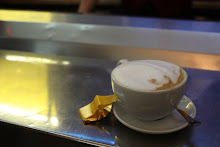
So, the second lab came and went in a confused array of muscle names and histology slides. Although in this lab we got to work with cadavers, it felt significantly less hands on than the first week. The cadavers were real, but other than that were mostly observed and everything was explained to us by a UGSI (undergraduate graduate student instructor--I know it makes no sense, Berkeley is odd and doesn't want to use the universal term "Teachers Assistant" TA).
 Compared to the bones which I got to hold, explore, turn over, and examine in the first lab, the cadaver was so academic and brief. I even attempted to make a drawing of the back's muscles which ended up resembling a piece of wood...
Compared to the bones which I got to hold, explore, turn over, and examine in the first lab, the cadaver was so academic and brief. I even attempted to make a drawing of the back's muscles which ended up resembling a piece of wood...One thing that the cadaver experience DID show was the amazing array of muscles that make up the neck! The thin platysma muscle hides so many criscrossing and varied muscles. Everything from the sternocleidomastoid that turns the head to the geniohyloid that helps with swallowing: it's all there (and on the cadaver it all looks like the same pink-brownish meat). Somehow by the end of all of this I'll be able to point at one of those random muscles and know it's name attachment points and function (hopefully!)
While anatomy can be daunting at times, it can also be incredibly self explanatory. For example, on our quiz (which I ultimately failed...) one question was "What is the function of the erector spinae?" Erector Spinae? Erect spine? Holds the spine erect? Ka-ching! my logic worked! unfortunately not EVERY muscle is so kind, but it was exciting to figure it out after starting without a clue!
And in case you are still reading....
some cool random factoids I encountered in Lab!
 Geniohyoid muscle = helps with swallowing but is REALLY hard to see on a cadaver because like the genie in a bottle its hidden!!
Geniohyoid muscle = helps with swallowing but is REALLY hard to see on a cadaver because like the genie in a bottle its hidden!!ligamentum nuchae = string on the back of the neck that literally holds your head up-- I had no idea that yoga/ballet teachers were referring to an actual string!
linea alba = even basic latin should tell you "white line" and YES another self explanatory term: its literally the white line that runs down the midline of the abomen in line with the belly button. This difining midline of the 6-pack is made up of tendonous material and is actually white. The linea alba always reminds me of Diamonds lecture on the abdomen muscles and c-sections. Apparently originally caesareans cut along this linea alba since it is a natural "opening point" into the abdomen. However, this method was more prone to complications in healing so the surgery switched to a lateral (horizontal cut) just below the bikini line. Last year Prof. Diamond joked how the ladies didn't like having a scar, but didn't mind having so many torn muscle fibers (since a horizontal cut goes through a lot more muscle!) Apparently the lateral cut goes through more muscle for mainly cosmetic reasons. How random science is some times! Sorry for the digression....
 One thing I did learn is that I take much more pleasure in simply drawing the muscle groups and bones than knowing every little name for every bulge tubercle or fossa. However if I want to speak coherently about anatomy I'll have to learn the language. At the very least I will be prepared the next time I go to the doctor and I can tell them the exact bone or muscle that hurts!
One thing I did learn is that I take much more pleasure in simply drawing the muscle groups and bones than knowing every little name for every bulge tubercle or fossa. However if I want to speak coherently about anatomy I'll have to learn the language. At the very least I will be prepared the next time I go to the doctor and I can tell them the exact bone or muscle that hurts!Lab 2. check. a little trickier than the first, a lot of material, but I am sure slowly and surely this will all start to catch on (as long as I don't start reciting anatomical knowledge in my sleep!)
Oh! and if by now anyone is still reading feel free to check out the pics in better resolution--just click on them. I was too lazy to crop out the uninteresting stuff (and I never know what is the most interesting!)
ciao ciao tutti!

No comments:
Post a Comment